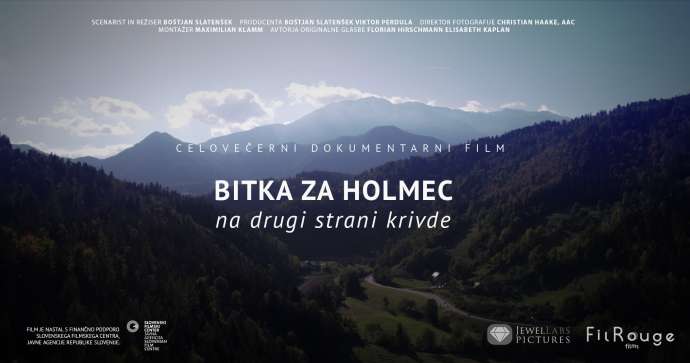STA, 28 June 2022 - A new documentary film on one of the bloodiest clashes of the 1991 ten-day independence war for Slovenia was screened in Slovenj Gradec on Monday. The film revisits the Holmec border crossing affair, in which Slovenian police and soldiers were accused and later cleared of shooting surrendering Yugoslav army personnel.
Entitled The Battle for Holmec - On the Other Side of Blame (Bitka za Holmec - na drugi strani krivde), the documentary by Slovenian film-maker and Boštjan Slatenšek sheds light on the clash that took place on 27 and 28 June 1991 on the Holmec border crossing with Austria which members of the Yugoslav army attempted to seize.
The film features footage of a meeting of the former adversaries 30 years after the incident that claimed two lives among Slovenian police officers defending the crossing with the assistance of the Slovenian Territorial Defence units, and three lives on the side of the Yugoslav army.
Slatenšek told the press that the Holmec clash, which resurfaced as a political scandal in 1999 amid speculations of a possible war crime that were later refuted, had already touched him during the independence war, during which he first served in the Yugoslav Armed Force to soon join the Territorial Defence.
When the war crime allegations began, he felt it "horrific how the state as such did not come to the defence of those subjected to them in a more determined fashion".
He also feels journalists had failed to present the story the way it deserved to be presented, which is why approaching it with a documentary seemed a logical step.
While the feature-length documentary includes a lot of footage of the developments, Slatenšek highlighted testimonies as the crucial element of the film, including "testimony by the opposite side, which I find the film proved to be credible".
A key moment, captured in footage by an Austrian cameraman, is the surrender of a group of Yugoslav soldiers during which shots can be heard. Commenting on it for the documentary, Husein Šabić, who was in charge on the Yugoslav side, said that none of the soldiers seen surrendering had been killed or hurt.
"Nobody shot at these people who were surrendering. And this is what matters .... nobody was wounded, nobody died. It is therefore not possible that a crime took place," said Slatenšek, whose role in the case is also among the topics of the film.







